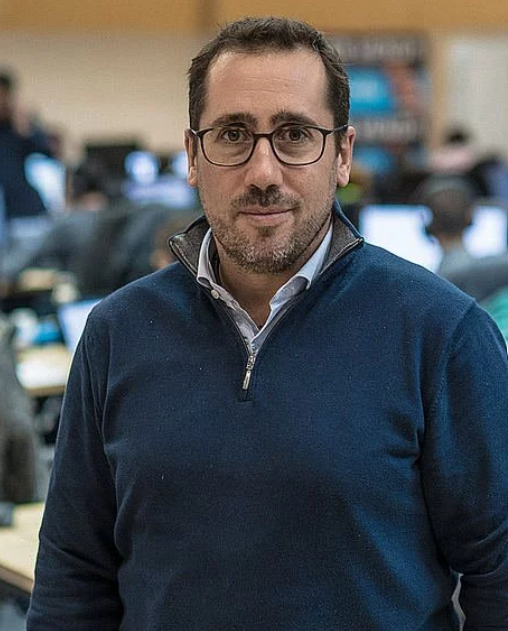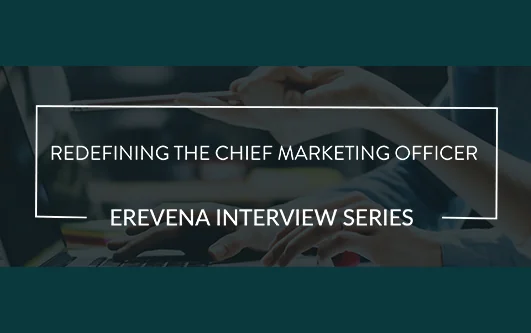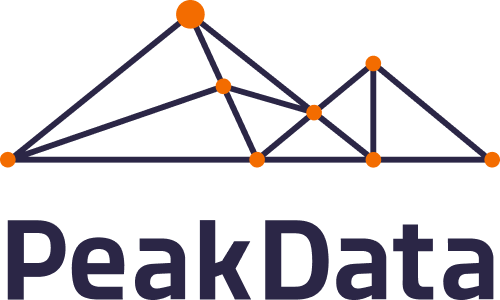Mikael Journo, Chief Marketing Officer at educational tech and media company Lingokids, talks to Flo Bown, Partner at Erevena about his journey in marketing leadership from tech management through consulting to building teams from scratch – and how the move to a freemium model generated accelerated growth for Lingokids.
You started out studying engineering – how did you end up in marketing?
I did an engineering degree from Centrale in France and then followed it up with an Engineering Management masters at Cornell University in the US. So, I had a mix of both engineering and management to offer. After moving from France to the US I led technology projects for Sapient. It was the late 1990s and I was helping customers create their online businesses. This was the start of an eclectic journey into marketing, which took off when I returned to Europe.
How did you become interested in quantitative marketing?
Technology management is different on opposite sides of the Atlantic and I didn’t feel I had the same affinity with it when I came back to Europe. When a headhunter suggested consulting might be a good career option, I went down that route. My first role saw me stepping into marketing because we ran a lot of projects for mobile operators using analytics. Quantitative marketing using huge databases allowed us to observe customer behaviours and better understand how they responded to offers and prices. With these insights we were able to re-design the offer catalogue of our clients and generate a lot of value for them.
Why did you ultimately make the jump from consulting to marketing leadership?
I honed my strategic consulting skills with my next job at BCG where I worked on numerous projects. It was extremely fulfilling from both a learning perspective and the type of people I worked with, but I realised that I was more interested in execution than consulting – doing and making things happen. I then led strategy and analytics at Vistaprint in Barcelona where we were optimizing all of our marketing activities through analytics. This was an opportunity to combine my marketing and strategy expertise and to start building teams around pricing and user research. After a couple of years, I also took the leadership of the CRM marketing team.
You then worked in a huge scale-up scenario – what was that like?
I was recruited by interactive entertainment business King, which was going through explosive growth. The company grew 20x in the span of one year and needed to build or strengthen a lot of its infrastructure. I was among a number of VPs hired to build the organization at scale from the get-go. It was extremely exciting because there was no legacy and very few constraints. We got to build everything from scratch, from the teams, the tools and the processes, to the customer treatment at scale, which was pretty unique. King’s user base was the fourth biggest in the world after Google, Apple and Facebook. We were even bigger than Twitter! It was an incredible adventure and my role evolved from building the CRM to taking charge of social media and customer care, as well as managing several game launches from a marketing standpoint. I recruited a lot of talent and ended up with an organization of 120-140 people, ranging from marketers and data scientists, to business analysts, developers and creatives.
How did you use this experience in your next roles?
I really enjoyed the building phase at King, so after 6 years, when the organization was stable, I looked for another opportunity to do something similar. I first joined start-up firm Housfy as its general manager for real estate and then joined Lingokids as CMO in 2021. I had started collaborating with an edtech start-up a few years prior and when the opportunity to take a more active role in a successful edtech company arose, I could not resist.
Why Lingokids?
I wanted a role in which I could do good and have a positive influence. I was also looking for people to work alongside with whom I would mesh well. That meant finding a founder/CEO who had similar values around people and business management. That’s what I found in Cris at Lingokids. The rest of the team was also great and I had a real affinity with the product
I felt that education (and kids’ education in particular) was an area where I could reapply most of what I had learned and, at the same time, help make the world a little bit better. With two kids of my own at the relevant age (Lingokids targets 2-8 year olds) I could see a need for something better than what was on the market. Parents are looking for higher quality screen time, which Lingokids delivers through its Playlearning™ approach.
What were your priorities when you joined – and why?
A large part of the company growth was driven by performance marketing and at about the same time as I joined several changes in the performance marketing ecosystem (IDFA & GAID changes) negatively impacted our performance in a significant way. In response to this, one of our priorities was to improve our marketing efficiency, while another was to revisit our business model to increase our other growth drivers. I could see that with a non-freemium model and a hard paywall, our potential for growth could be limited in the mid-term. We were already generating a high volume of installs, with up to 2 million a month, but we were offering an experience only to the people willing to subscribe or at least start a trial right away. They represented a fraction of our installs. This led us to decide to transition Lingokids to a freemium model.
Can you tell us more about the freemium model?
It was about making sure we had a really interesting value proposition not only for subscribing customers but also for those who were not yet ready to pay. This has been a big change in how we operate. We also had to contend with a start-up environment where the emphasis moved from growth to profitability. So our challenge became to move to freemium, while becoming profitable and still continue to grow the business. The team did an amazing job and indeed managed to deliver these three objectives at the same time.
Last year, we not only improved our marketing efficiency, finding new channels and moving our allocation of investment to them, we also played around with our offers and pricing, optimizing them by country, by platform and by device. We did this in a way that freed up more cash up front, by moving more customers to yearly subscription at a more attractive price without sacrificing growth. And, of course, we established our freemium model, which saw our audience quadruple in the span of a year.
What impact has the growth in users had on the business?
It was a very significant jump and, while many were non-paying, we still managed to grow our revenue last year by 30-40%. Importantly, more than half of our installs now end up playing activities inside the game, which gives us the scope to scale as we give them incentives to convert at a later stage. The more freemium users we onboard, the more potential for positive word-of-mouth we also generate.
That is important for us because we want as many kids as possible to be able to use our product and derive much greater value than they would sitting in front of passive content on streaming platforms.
How do you address the challenge of lifetime value in the users age window?
We need our marketing to be very efficient because we don’t generate 20-year customers. So, we need our payback to be fast enough for us to scale. And, while early cohorts may have moved on, there are still a lot of kids in that 2-8-year-old segment, with about half of our business in the US and the rest spread across the world.
We’ve changed our product positioning over time to align with our international growth. We started out as an English learning product, with fun activities, games and content for kids to go through and learn English in the process. Then as we expanded internationally, we de-emphasised English learning in favour of a broader skillset. Now Lingokids teaches all sorts of academic and emotional skills, from maths to mindfulness, from engineering to empathy – it’s a very broad spectrum.
How has your approach to marketing changed?
Our strategy and acquisition approach haven’t changed as we’ve gone into new markets. We are very much digital marketing centric and how we operate is pretty agnostic, with the same approach to optimisation and efficiency everywhere. At the same time, we do run localised ads. Another lever of investment to boost our visibility is our YouTube channel, which has been scaling fast. By mid-January we had more than 3.3 million subscribers with about 35 million views per week on the channel.
Does a move from a focus purely on growth to profitability demand new skills?
CMO is a multi-disciplinary role and you need to find someone who has a strong affinity with all aspects of the job. CMOs should be on top of quantitative analytics. They need to understand customer psychology. They need to have a strong affinity for the creative execution and the messaging needed to build a brand’s identity and personality. Customer care and how users are treated are also a component of the brand, so they also often fall within marketing’s remit.
While the CMO utilises different skills at different times and, with the push to profitability, a more quantitative approach becomes more critical. This demands a real understanding of the efficiency of marketing investments and how to optimize them. It also makes pricing and offer optimization more important as small changes there can make a big difference on profitability.
What trends have you seen in the role of CMO?
We’ve seen years when everyone seemed to be looking for a brand CMO because they’d built successful companies but felt nobody knew them. At another time, the focus was very much on performance, marketing and growth and companies were hiring growth VPs rather than CMOs. Before that when CRM was relatively new and people understood that it could be extremely valuable, companies sought CRM CMOs! The next trend is likely to be a demand for an AI CMO – someone who knows how to optimize the efficiency of marketing by leveraging AI to generate creatives and optimize execution. In the end, a good CMO probably needs elements of all of the above and will be stronger in some areas than in others.
If the CMO can’t do it all, what skills should they be recruiting?
You should know how to recruit really good people to support you, especially in those areas where you have less expertise or experience. At the end of the day, a marketing organisation is a team capable of meeting multi-disciplinary needs. And while you might not have the necessary expertise in a particular area, you need to have a strong enough understanding of it to recruit the right person to do the job really well. I see this ability to recruit quality talent as a big differentiator among CMOs.
What next for Lingokids?
I love it here. We’re just at the beginning of our journey. We have a fantastic product and we exited 2023 stronger than ever. We’ve improved our marketing efficiency and scaled our audience both inside and outside the product. Our move to a freemium model has helped to propel that growth and has given us massive traction. We have the opportunity to become the first destination for kids and to be top-of-mind for parents looking for the right screen time for them.
There’s been an evolution in how children learn and are entertained. They used to play in parks, then along came TV, which became an electronic nanny. For the past 5 or 10 years, tablets and now mobile phones have taken over that role, which is something of a double-edged sword. On the one hand, there’s so much content out there, but it’s less curated so you may find your child has access to something that’s completely silly. On the other hand, it offers so much possibility because their screen time can be interactive and cover a much broader range of topics that get them learning. That’s where Lingokids comes in.
Share this article:












